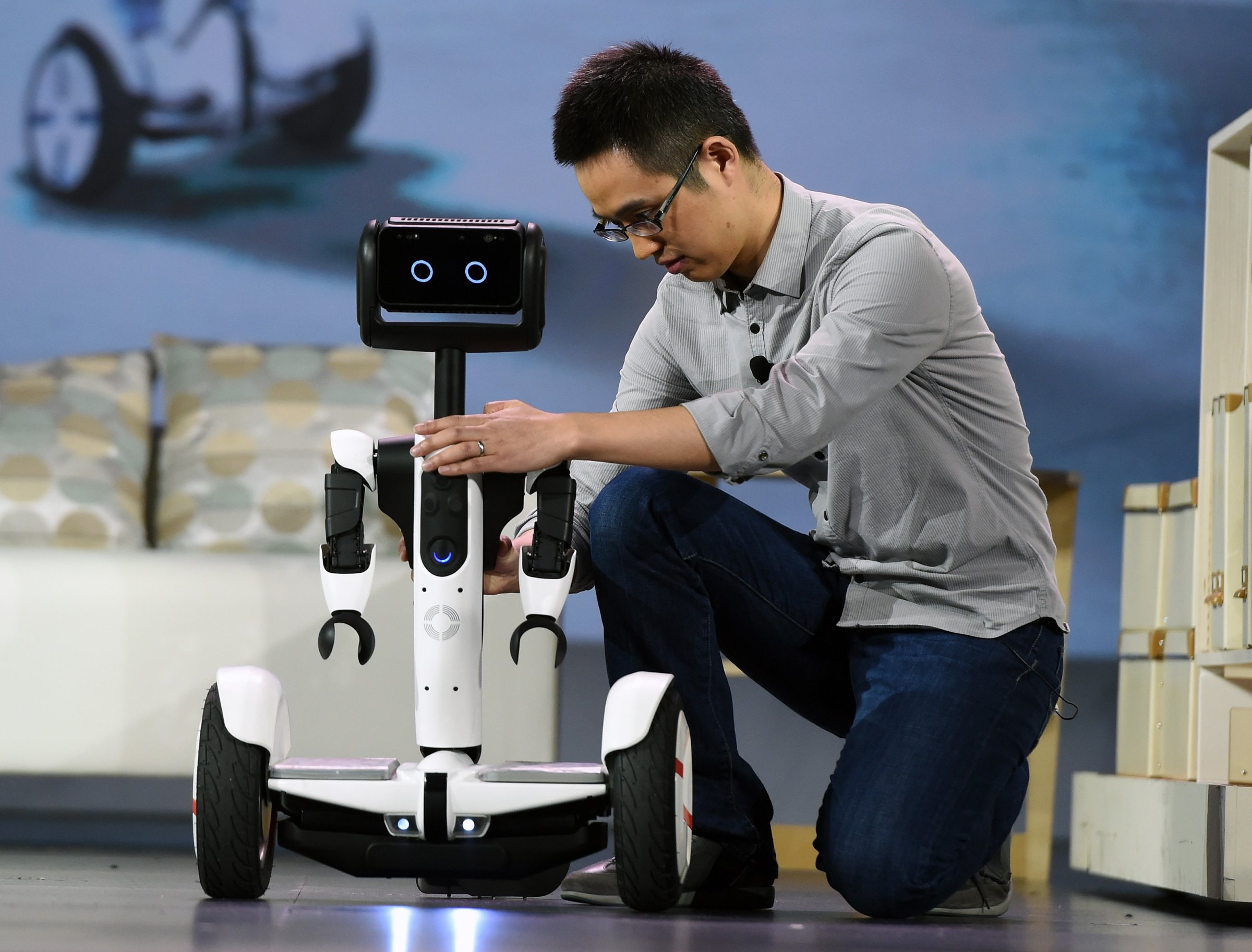
The two-wheeled self-balancing scooter earned its “hoverboard” nickname because it creates the illusion that the rider is floating on wheels. But if the idea of owning a device that mimics the feel of a hoverboard doesn’t sound futuristic enough for you, perhaps this will: During its CES 2016 keynote, Intel showcased a “hoverboard” scooter that transforms into a personal robot.
The gadget is a type of Segway scooter made by Chinese company Ninebot. It’s powered by one of Intel’s Atom processors. The robot’s head retracts into the device’s cylindrical body when it’s being used as a hoverboard. It can respond to voice commands and stream video, which means it can do things like see who’s at your front porch when the doorbell rings. Built with Intel’s RealSense ZR300 camera, the robot can avoid bumping into objects in your home and follow you on command.
Read more: Meet the electric Batmobile that wants to take on Tesla
Developers will be able to brainstorm new use cases and applications for the robot since it’s an open platform. A pair of arms were added to the robot during the demonstration on stage, which the device recognized immediately.
“Are those my arms?” the robot said. “Awesome!”
Segway plans to launch a developer kit for the robot in the second half of 2016. A consumer edition will eventually follow, according to a press release from Intel.
The new Segway robot comes while hoverboards are being scrutinized over their safety record. More than 15,000 hoverboards were detained in the United Kingdom last month amid concerns about exploding batteries. Many U.S. airlines have banned the devices for similar reasons.
More Must-Reads from TIME
- Introducing the 2024 TIME100 Next
- The Reinvention of J.D. Vance
- How to Survive Election Season Without Losing Your Mind
- Welcome to the Golden Age of Scams
- Did the Pandemic Break Our Brains?
- The Many Lives of Jack Antonoff
- 33 True Crime Documentaries That Shaped the Genre
- Why Gut Health Issues Are More Common in Women
Contact us at letters@time.com